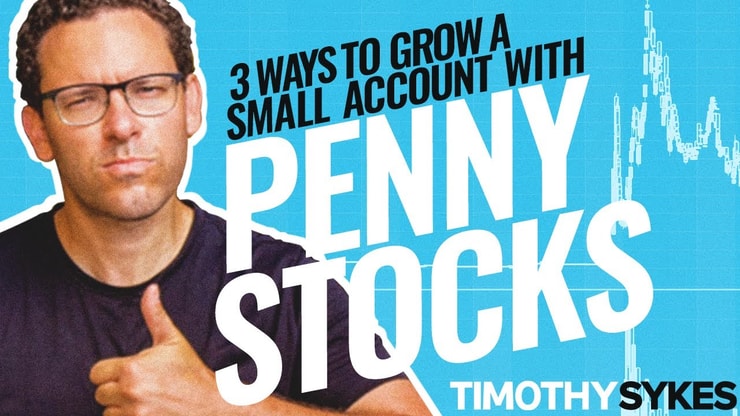When you’re starting out, a term like ‘stock float’ might seem scary. But it shouldn’t be.
Just think of stock float as the supply side of trading’s supply-demand equation. Or … the number of freely traded shares of a particular stock.
This is one of the most important concepts for you to learn … It’s one of the big things that makes stock prices rise and fall.
What drives volatility? What makes a stock jump 336% or more in a single day?
(Don’t know why this is important? Please, for the love of all that’s holy, check out my no-cost “Volatility Survival Guide.”)
What makes a ridiculous sell-off occur first thing in the trading day?
The simple answer: supply vs. demand.Supply vs. demand is the age-old law of trade. Since trading is largely based on supply and demand, the stock float matters. The fewer shares that are available, the smaller the stock float — i.e., supply. The smaller the stock float, the more in demand the stock can potentially become.
Today I’m zeroing in on penny stock float. So put on your learning caps and let’s get started…
Table of Contents
- 1 What’s a Stock Float?
- 2 Understanding Stock Market Floatation
- 3 Benefits of Low Float Big Gainers
- 4 What Is Free Float Market Capitalization?
- 5 Types of Stock Float
- 6 How to Determine the Float of a Stock
- 7 Are Low Float Stocks Good for Trading?
- 8 How to Trade Low Float Stocks in 8 Steps
- 8.1 #1: Pay Attention to Stock Market Indicators
- 8.2 #2: Get to Know Key Stock Patterns
- 8.3 #3: Develop a Low-Float Stock Strategy
- 8.4 #4: Use Technical Analysis
- 8.5 #5: Use Fundamental Analysis
- 8.6 #6: Develop a Stock Watchlist
- 8.7 #7: Use a Stock Float Screener to Find Breakouts
- 8.8 #8: Never Stop Learning
- 9 What Are the Risks of Trading Low Float Stocks?
- 10 Frequently Asked Questions About Stock Float
- 10.1 What’s a Stock Float?
- 10.2 Why Is a Stock's Float Important?
- 10.3 What Are the Differences Between High and Low Float Stocks?
- 10.4 Is a High Float Good?
- 10.5 What Is a Good Float Percentage?
- 10.6 What’s the Difference Between Shares Outstanding and Float?
- 10.7 Can a Company Increase or Decrease its Float?
- 11 The Bottom Line
What’s a Stock Float?
Stock float is the number of freely traded shares of a particular stock. But it’s not quite that simple…
When a company goes public, its board authorizes the creation of a certain number of shares. This is the maximum number of shares a company can legally offer. Management needs to get shareholder approval to increase the number of shares.
Typically, a company issues fewer than the authorized number. That’s so they can raise more funds down the road without having to get shareholder approval.
For stock float, calculate the outstanding shares minus restricted shares minus closely held shares. Closely held shares are shares owned by major long-term investors and insiders. These shares don’t usually change hands.
Why should you care? I’m getting there. For now, all you need to know is this:
Stock float is one of the most important things I look at in a trade.
Stock float is just one piece of the puzzle. To get a comprehensive view of the market, one must also consider other factors. For instance, the performance of hot stocks can provide valuable insights into market trends.
Check out this guide to hot stocks. It offers a detailed analysis of hot stocks and how they can impact your trading strategies.
Understanding Stock Market Floatation
The concept of float is central to understanding the stock market dynamics, particularly when dealing with penny stocks, where float plays a crucial role. If you’re a day trader or investor trying to make your mark on Wall Street, grasping this concept can be a game-changer.
A company’s float is calculated by subtracting restricted shares from the total shares outstanding. The smaller the float, the more volatile the stock may be, due to supply and demand dynamics. It’s an intriguing scenario that offers both risks and rewards for the perceptive investor.
High-float stocks may not fluctuate as dramatically as low-float ones, providing a certain degree of stability. However, low-float stocks can offer a faster return on investment, provided you’ve done your due diligence.
If you’re looking to deepen your understanding, here’s a comprehensive definition of stock float. It provides a clear and concise explanation, helping you make sense of this complex concept.
Benefits of Understanding Stock Float for Traders
Back to supply and demand…
When the float is low, there are fewer shares to trade. This can have a huge impact on a stock’s price movement.
If demand is high and supply is low, prices go up. If demand is low and supply is high, prices go down.
It works exactly the same when trading penny stocks. Stock float is one of the big things I consider when I put a stock on my watchlist.
Benefits of Low Float Big Gainers
Low float stocks are a double-edged sword. They can make you money quickly or lead to significant losses in a short span. When it comes to trading these securities, you’re essentially speculating on rapid value changes. It’s not for the casual investor but more for those who are comfortable with high-risk, high-reward situations.
The potential for quick profits is an attractive feature of low-float stocks. With fewer shares on the market, the law of supply and demand comes into play. When demand outpaces supply, share prices can skyrocket. If you’re on the right side of that equation, you can make money.
On the flip side, low-float stocks also have the potential to plummet just as quickly. This is not something to jump into without doing your research. Always keep this fact in mind: these stocks can be volatile.
Risk Reduction
Risk reduction is crucial when dealing with low float stocks. This is not a place for gambling, but rather a sector where you need a calculated strategy. Your basis for every trade should be a thorough analysis of available data, as well as an understanding of market indicators and trends.
Before you buy or short a low float stock, consider the company’s fundamentals. Does the company have a solid foundation? Is there a reason for the sudden interest? Information is your best tool for managing risk, and platforms like Nasdaq or Benzinga can help provide this.
Also, it’s important to determine your risk/reward ratio before entering a trade. Know when to exit, whether it’s to take profits or cut losses. Investing without a plan is a liability you can’t afford.
Opportunity to Participate in the Market
Low float stocks offer unique opportunities to participate in the market. They can provide substantial returns in a relatively short period, and while this potential for quick gains is appealing, it’s not without its risks. However, if you’re diligent, these stocks can be a worthwhile addition to your trading strategy.
They also offer an excellent way to understand market dynamics. The volatility of low float stocks exposes you to the bullish and bearish aspects of the market quickly, giving you experience that can be applied elsewhere.
Uniqueness of the Strategy
Low float trading is a unique strategy, different from traditional long-term investing. It requires a focus on short-term market dynamics and an understanding of technical analysis. In many ways, it’s less about the company’s long-term prospects and more about capitalizing on short-term price movements.
That’s not to say you shouldn’t know the company you’re investing in. Understanding the industry, the company’s position, and its financials are part of your due diligence. But, with low float stocks, the timing of your trade often takes precedence.
What Is Free Float Market Capitalization?
Free float market capitalization is a variation of market cap, where only the “free-floating” shares are considered. These are the shares available for trading in the open market. The shares held by promoters, company insiders, and the government are not included.
The free float method gives a better idea of market liquidity and the actual market capitalization. This method is followed by most of the world’s major index providers, including the NYSE and Nasdaq.
Types of Stock Float
In general, I think of high float and low float stocks. (I guess there are also medium float stocks, but who cares about them?)
The number of shares available to trade determines whether a stock is high or low float.
High Float
A stock doesn’t become ‘high float’ once it passes a certain number of shares available.
The consensus seems to be somewhere in the 15 million to 20 million range. Anything less than 15 million shares and most traders consider the stock low float.
High-float stocks tend to be less volatile because there are so many shares available. It takes a lot more buying power to move the stock price higher.
The price movement of these stocks might follow a market or sector trend. But it won’t result in big swings, because supply mostly meets demand.
And that’s why I focus most of my energy on low float stocks.
Low Float
So what makes a low float stock?
Good question. Like so much in the stock market, this isn’t an exact science.
According to my former student and buddy Tim Bohen at StocksToTrade, the dividing line is 10 million.
But didn’t I just say anything under 15 million is low float? Which is it?
I wasn’t put on this earth to solve questions like this. I was put on this earth to trade penny stocks and ride their low-float breakouts to small, consistent gains.
So let’s go with Bohen’s number. The lower the float, the more volatility, and you know I like that.
How to Determine the Float of a Stock

To do a stock float lookup, you can use a trading platform like my favorite, StocksToTrade.
(Full disclaimer: I’m an investor in StocksToTrade, and I proudly helped develop it.)
When you enter a ticker, basic information about the stock will display. The float will be right there. Or you can use the stock screener to screen for stock float data and then filter for other key indicators.
Your broker’s platform might offer something similar.
You can also find a stock’s float on a free service. Try Finviz or Yahoo Finance under the ‘Statistics’ tab.
Keep in mind that the float might not be completely accurate on the free sites. Especially if the company recently did a stock split or reverse split.
Float size is especially important for penny stocks. These are the stocks that I’ve made $7.4 million trading in my 20-plus year career.
Here’s my in-depth guide to penny stocks, which contains everything I’ve learned and experienced over my trading life — completely free!
Practical Example of a Stock Float
Let’s get some real numbers in here.
Say a company decides to raise capital through an IPO (initial public offering). The board of directors authorizes the creation of one million shares. Those shares are called authorized shares.
The company offers 500,000 shares to trade on the open market. These shares are referred to as float shares. They’re the shares you and I can trade when we fire up our trusty laptops and log in to StocksToTrade.
The company also issues 200,000 shares for company insiders or key employees, as part of a stock option plan. These restricted shares can’t be transferred until certain conditions are met. They may need to be held for a certain period of time. Or they get released at certain corporate milestones.
In this example, the total outstanding shares add up to 700,000. The company holds another 300,000 shares they can issue in the future. The stock float is 500,000 shares.
Are Low Float Stocks Good for Trading?
I like stocks with a lower float because they can make more powerful moves. They can create great opportunities to ride some upward momentum.
But the volatility can be scary for some new traders. Especially if the stock is choppy — with huge uptrends followed by big downside moves.
But they work great for me since I usually underestimate stocks and sell way too soon. I go for singles, not home runs.
That’s just my style of trading. I cut my losses quickly and protect my profits.
How to Trade Low Float Stocks in 8 Steps
Now you have an understanding of stock float. But how do you use this information to work toward your own trading success?
Here are eight steps to help you trade low float stocks.
#1: Pay Attention to Stock Market Indicators
High Volume
One of the key indicators I look for is high trading volume.
Trading volume is the number of shares traded during a session. When more shares get bought and sold, the trading volume is higher.
High volume means you can enter and exit your positions a lot easier. The last thing you want is to get stuck in a position because nobody’s buying or selling. It bites. You can lose big when you’re stuck in positions like that.
Trading volume is one of the most common indicators shown on stock charts. It’s usually on the bottom of the chart — you don’t need to change any settings on your charting software.
Sometimes traders pit stock float vs. volume in their trade setups. Ideally, I want both! I’d be wary of trading low-volume stocks. The float of a stock shouldn’t affect its volume.
But this next thing will…
News Catalyst
A powerful news catalyst is another key indicator I look for. News can not only create a spike in trading volume, but it can also lead to powerful price moves. So keep an eye on the news.
You should know why a stock is making big moves. With low float stocks, pressure on demand can translate into big price movements. If you can’t find a reason, beware.
It could be some kind of marketing campaign without any legs. You can trade pumps, but you have to be able to recognize them first.
#2: Get to Know Key Stock Patterns
Patterns are called patterns for a reason. They repeat.
The beautiful thing is, the human mind is awesome at recognizing patterns. In the stock market, certain patterns happen again and again — and you can learn them.
I teach a lot of patterns to my Trading Challenge students. My favorites include supernovas, morning panic dip buys, breakouts, and OTC first green days.
This step is an important one. It’s easy for me to rattle off a few patterns. But it’s up to you to go do your homework.
Once you understand a pattern, see if you can identify it with stocks on your watchlist.
#3: Develop a Low-Float Stock Strategy
It’s important that you set yourself up with a trading plan for every trade.
You want to know your entry and exit points, the catalyst moving the stock, and the pattern it’s following. These should all be part of your plan.
Part of my plan is concentrating on low float stocks. This way I know that these other factors can affect the stock’s price.
Here’s a hint that will help you learn from mistakes and wins alike … You should always write down your strategy before you enter a trade.
If you’re just starting out, create the habit now. Document your trades before you trade for real. Keeping a trading journal can be an invaluable tool.
I go over the indicators I look for before entering a trade in my DVDs. Check them out in “Trader Checklist” (with a subscription) or buy my “Trader Checklist Part Deux” DVD.
Preparation is key. I can’t emphasize this enough.
And I want to be clear about this: I don’t trade on gut feelings or message board tips. I use the same indicators, patterns, and proven strategies I’ve used for over 20 years.
Just knowing about float shares and patterns is not a strategy. Your strategy is the entire plan — start to finish — for each individual trade.
#4: Use Technical Analysis
Technical analysis is my go-to when it comes to trading low-float stocks. This is where you use certain indicators on stock charts to determine whether the setup is right.
I don’t want you to overcomplicate this. There are a lot of bad, overcomplicated indicators out there that I never use. Seriously! I don’t have time for RSI, Bollinger Bands©, or Fibonacci retracements.
I like to keep it simple.
News can be a powerful indicator. I like to buy stocks with good news — when they’re breaking out to new highs. Sometimes I short pumps on their first red day … or when bad news catches up to them.
(But I rarely short in this hot market and I don’t recommend shorting for new traders.)
And I use technical indicators like recent support or resistance levels. Maybe I’ll look at moving average or VWAP for a swing trade.
And then there are morning spikes and gaps.
It’s not that the more complex technical indicators aren’t valid. But they don’t serve the kind of trading I do.
#5: Use Fundamental Analysis
I don’t use fundamental analysis as much as technical analysis … Still, you should understand it and make it part of your arsenal.
Fundamental analysis looks at the company’s value, like its balance sheet, projected revenue, and management style.
Company fundamentals can affect the stock price. They can also give you food for thought when it comes to trading.
You might see something that indicates a run has legs. Or you might see why a run won’t last and prepare to potentially play the crash and burn.
#6: Develop a Stock Watchlist
A stock watchlist is essential for trading. You won’t make a play on every stock you watch — more like one out of every five or 10. Maybe even one out of 20.
This is a good thing. There’s a reason that overtrading is a thing and ‘under-trading’ isn’t.
For a lot of people, trading can feel like gambling. Trust me — I know. That’s why I travel so much. Otherwise, I’d be trading all the time.
The thing is, the more you prepare, the less you set yourself up for trading on impulse. Your watchlist is an essential part of your preparation.
Want to know which stocks I’m watching every weekly — delivered right to your inbox? Subscribe to my weekly stock watchlist for no cost, right to your inbox.
#7: Use a Stock Float Screener to Find Breakouts
We live in amazing times…
That said, don’t waste time doing things the hard way!
When I first started trading, I’d have three or four different computers going at once. I needed to flip between 20 different internet browser windows.
Things are a lot simpler now. You can use a stock screener to find low float stocks that meet your setup criteria. The one I use is StocksToTrade.
Using the StocksToTrade built-in screener, you can set a screen to find:
- Low float stocks
- Tickers with recent news
- Stocks trading within set volume parameters
- And stocks already up a certain percentage on the day
Boom!
Tim Bohen shares the stock float screener function here.
It’s awesome because you can let the software do all the heavy lifting! I even helped with StocksToTrade’s design, so, in my ever-humble opinion, you KNOW it’s gotta be good.
#8: Never Stop Learning
You might realize by now that there are some foundational principles by which I live. And I recommend them to all my students. This one is the most important.
There’s always something to learn to be a better trader. I still study every day. This is such a crucial concept. If you follow me regularly, you know I talk about this. A LOT.
If you look at the top people in any field, you’ll see it’s the same — they all keep learning, practicing, and improving. Constantly. If you want to boost your chances of succeeding at this, you have to keep learning … It’s not even an option.
Every one of my successful Trading Challenge students has that same attitude. None of them shows up and says, “I know it all.”
No. They show up every day and ask, “What can I learn today that will help me for the rest of my life?”
Think about that. It’s why I love my students so much: they’re DRIVEN.
What Are the Risks of Trading Low Float Stocks?

The volatility with low float stocks is great for huge upside moves. But low float can be a double-edged sword.
Once a price is too high and the demand is gone, the stock can tank fast. You can see stocks move $1 or more per share in a minute or two.
There’s no time to freeze up in shock. You need to be ready to react and cut losses quickly.
So yes, low float stocks are good for trading but don’t overstay your welcome and get greedy. Trade safely and take small gains.
Trading Challenge
If you want the full benefit of what I’ve learned in my 20+ years of trading, apply for my Trading Challenge.
You’ll join a great community of traders who push each other to keep getting better. My students get access to all that I have to teach. This includes 6,000 video lessons, my DVDs, weekly live trading, and Q&A webinars with me and my top students. And of course, my Challenge chat room.
All my top students come from my Trading Challenge.*
Some, like my top student Tim Grittani, are legends on their own. Grittani has doubled my career earnings. He turned $1,500 into more than $12 million — $3 million this year alone!*
Others are just getting their start, like Jack Kellogg. At 22, he’s been alive for less time than I’ve been trading. But he’s still made more than $1 million in profit in the last three years.*
Teaching them has been one of my favorite things to do. This can be more than just an awesome way to make money if you fall in with the right people. My Trading Challenge students have formed a community, and it’s a wonderful thing to see.
(*Always remember: Most traders lose money. My top students and I have put in many years of hard work, experience, and dedication. Trading is inherently risky. Do your due diligence and never risk more than you can afford to lose.)
Frequently Asked Questions About Stock Float

What’s a Stock Float?
The stock float is the number of shares available for trading to the public. It’s also called free float or public float. The float doesn’t include restricted or closely held shares.
Why Is a Stock's Float Important?
Trading is based on supply and demand. The fewer shares that are available, the more in demand they can become. It goes back to the basics of economics. If demand is high and supply is low, prices go up. But if demand is low and supply is high, prices go down.
What Are the Differences Between High and Low Float Stocks?
A high float stock has a large number of freely available shares. Low float stocks have fewer traded shares. Every trader has their own standards for determining the difference. I consider a stock with fewer than 10 million shares to be a low float stock.
Is a High Float Good?
A high float stock can still move a lot with the right news and volume. It will take more volume to move than a low float stock. But if it has high volume relative to the float size, it can still create a good opportunity.
What Is a Good Float Percentage?
A stock’s float percentage is the proportion of outstanding shares traded on the market. The float percentage isn’t as important as the volume trading in relation to the float. But a low float percentage points to insider shares that could one day flood the market.
Shares outstanding is the total number of shares issued. However, some of these shares are held by company insiders and major shareholders. These shares are not freely available for trading. Float refers to the number of shares available to the public.
Can a Company Increase or Decrease its Float?
Yes. A stock's float can change if the company issues more shares. It can be through a secondary offering or insider selling. A company can also do a reverse stock split, which lowers the number of shares in the float.
The Bottom Line
Understanding stock float is an important part of your trading education. Hopefully, this article has given you another piece of the puzzle traders have to solve every day. This is the big question: what makes a good trade?
It’s important to recognize when something causes demand for a stock. That’s why traders scan for things like the biggest percent gainers. But demand is only half of the equation.
The other half is supply, and that’s what the float determines. When the float is low and the volume is high, big price swings become possible.
That’s why low float stocks rock. And when you know how to ride their charts, you’ll love them too.
Do you like to trade low float stocks? Do you ever mess with high floats? Let me know why or why not in the comments!









Leave a reply